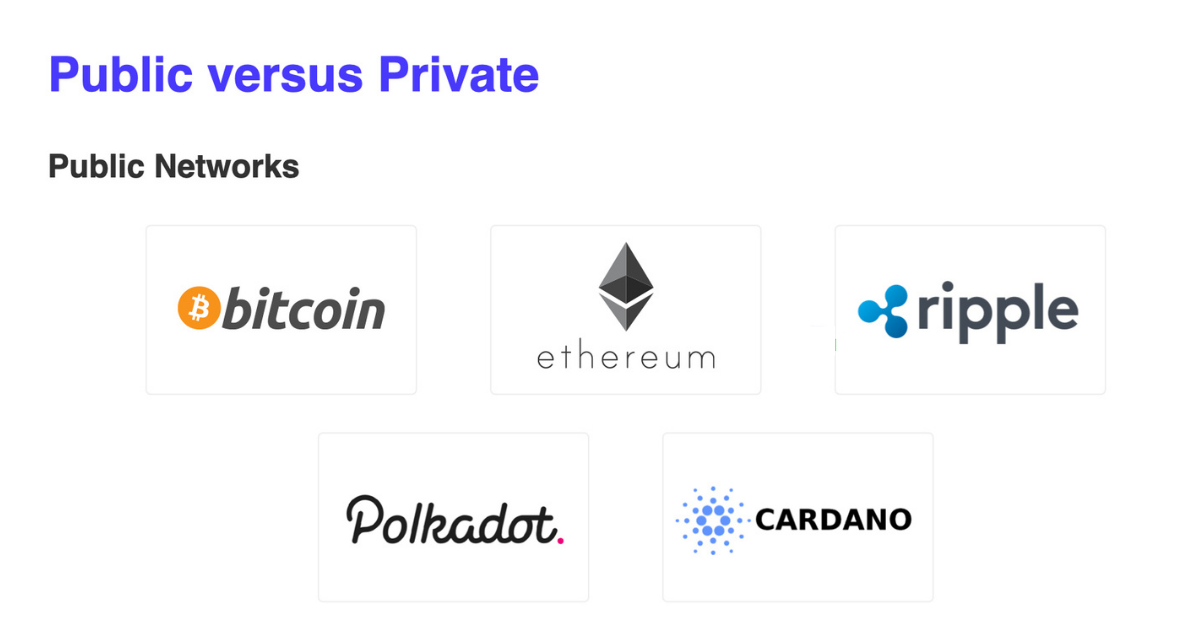Blockchain Principles
Blockchain opportunities for your company
Principles of Successful Blockchain Deployments
The opportunity that blockchain presents for businesses continues to go from strength to strength spanning dozens of industries.
Global spending on blockchain solutions reached USD 2.7 billion in 2019, and was projected to reach USD 4.1 billion in 2020 in spite of the pandemic, while some forecasts go as far as to suggest it may get to almost USD 18 billion by 2024.
With that in mind, executives and managers are increasingly aware of the transformative potential of the technology, with a significant number of the worlds largest companies embracing the technology. From the supply chain industry to finance, blockchain is already carving out its place in the world. Prospective users, however, will first have to overcome a few common obstacles. At Web3 Labs we’ve identified three common principles that help address these.
Free eBook
Simply enter your details and we'll email our Principles of Successful Blockchain Deployments eBook straight to your inbox!
Free eBook
Simply enter your details and we'll email our Principles of Successful Blockchain Deployments eBook straight to your inbox!
What's holding you back?
There are some common concerns among prospective blockchain users that should be addressed.
- Selecting the wrong problem: even though blockchain can be used to solve many problems in a wide range of different industries, it is still not a panacea. Understanding what it can actually do and where its strengths best come to light is key to putting it to good use.
- Unattainable expertise: while blockchain is different from other, more established technologies, that does not mean the niche is closed to all but a select few. However, when businesses showed the need for blockchain, developers rushed in to fill it, so now there are plenty of solutions within the space to choose from—all prospective users have to do is figure out what it is that they need.
- A lack of adoption: there is a perceived lack of adoption with blockchain, but we would argue the annual Blockchain 50 reports from Forbes, shows otherwise. A number of the world’s largest corporations have already implemented the technology in one way or another. On the other hand, the decentralized finance (DeFi) space attracts institutional and retail investors alike, with more than USD 12 billion locked in the space as of the time of writing (source: defipulse.com).
Principle 1
Choosing your target use case
What problem are you targeting?
Although blockchain can be applied to many different use cases, there are a number of them that would benefit more from a different solution—using blockchain just because it’s the shiny tool is pointless. However, there are three main areas in which blockchain excels.
With forecasts suggesting that money spent on developing blockchain solutions will continue to grow over the next few years, reaching over almost 18 billion U.S. dollars by 2024, it’s important to note that enterprise blockchain projects also have a high failure rate.
In order to make sure that your blockchain deployment is successful and does not become another statistic in the failure category, it’s imperative to be certain that the problem chosen is going to take full advantage of what blockchain technology can offer.
Read more on how blockchain can simplify your business.
Records of Ownership
Focussing your blockchain projects on the right problem is of vital importance. It will help to ensure that the time and money that you and your team invest are one step closer to success.
Blockchain is excellent at simplifying records of ownership. It is currently being utilised across a wide range of sectors from coffee bean production to emission offsetting with more and more organisations realizing the impact that blockchain technology can have on improving the legacy systems in place.
Recording ownership of an asset on a blockchain removes the need for asset owners to have their own internal representation of an asset. This means they don’t need to track the asset on their own internal systems.
There are unlimited examples of assets that may be owned or managed by a company, transferring or trading such assets between companies involves the timely and tedious process of reconciliation for all parties involved. This is where blockchain really comes into its own, simplifying and streamlining the process.
Find out more about records of ownership.
Complex Business Processes
Many businesses involve complex processes, ones which can be broken down into several subprocesses, which all have their own distinct features but all contribute to achieving the overarching goals of the business.
These complex processes often span across multiple entities and boundaries, often becoming time consuming and having an adverse effect on cost effectiveness, reliability and efficiency. Blockchain removes a number of these intermediaries as it provides a single source of truth for multiple organisations. This simplifies what has historically been slow processes where data is constantly being exchanged and reconciled between multiple organisations.
According to survey data from the 2nd Global Enterprise Blockchain Benchmarking Study, one of the key motivations for exploring blockchain is the prospect of increased process efficiency and the associated cost savings. It’s a logical conclusion therefore, that if your business involves cross party processes, blockchain provides an ideal solution to simplify this complex process for you.
Read our article on how blockchain simplifies complex business processes.
Digital Fingerprints
If your company is involved in processes that require data authentication, how can you be sure that the data you store in a digital fingerprint hasn’t been tampered with?
Due to the nature of blockchain, once data is written on a blockchain ledger it is unchangeable, making it a powerful asset to guarantee authenticity. As it is immutable and tamper-proof, it can be used to certify data at the point of capture, which can help in dispute resolution.
As blockchain is also transparent, alterations to data become visible to everyone with access to it. Therefore, as soon as an event takes place, a digital fingerprint of that event can be recorded within the blockchain for future reference.
With this security and transparency, the blockchain becomes a single source of truth for everyone involved, significantly cutting down on the time and costs involved with auditing, verification, and keeping multiple records.
Read our in depth explanation on why you should use blockchain for digital fingerprints.
Principle 2
Choosing your blockchain technology
Blockchain’s first foray into mainstream was through the popularity of Bitcoin. Ethereum then introduced programmability into blockchain networks with its virtual machine.
Finding the platform to support your business depends, first of all, on whether you want a public or a private network. Public networks include the likes of Bitcoin, Ethereum, Polkadot, Cardano, and others.

Private networks are consortia-driven, support greater transaction throughput, and are permissioned—in other words, aimed at businesses who need blockchain without the decentralization aspect usually associated with it. Within the private network sphere, there are several well-established platforms users can choose from.
Read our guide on how to choose the right blockchain technology.
Principle 3
Choosing your blockchain team
One of the other important considerations when deploying blockchain is the level of expertise you have in your organisation to support the deployment of the platform you have chosen.
Broadly speaking there are three options, ranked by complexity, from highest to lowest:
- Self hosted. As its name implies, this means onboarding a DevOps team to create a fully bespoke blockchain platform from the ground up.
- Cloud. Blockchain-as-a-Service offers third-party creation and management of blockchain networks, but still requires some understanding of how the technology works for day-to-day operations.
- Fully managed. Some providers are able to create your solution for you, as well as manage it completely.
One you have your platform deployed, smart contract development is another important consideration: which programming language do you want to use? Different providers will offer support for different languages. There is also the matter of integrations, as finding the way in which blockchain fits in with your existing infrastructure is key to successful implementation.
Last but not least, the security aspect of a blockchain platform is mostly tied to its key management and network security.
Read our article on how to choose the right blockchain development team.
Are you ready to adopt blockchain technology?
Our products and services make blockchain technology accessible for everyone
Chainlens Blockchain Explorer
SaaS and on-prem blockchain data and analytics platform for Ethereum compatible, layer 2 and Polkadot networks.
Enterprise blockchain support
Production support for public and private blockchain networks built using Quorum and Hyperledger Besu clients.
Web3 Labs Newsletter
With the Web3 industry moving at such a fast pace, it can be time consuming to keep track of all the latest news and events.
Subscribe to our newsletter and you'll receive regular insights and updates relating to enterprise blockchain in one place.



